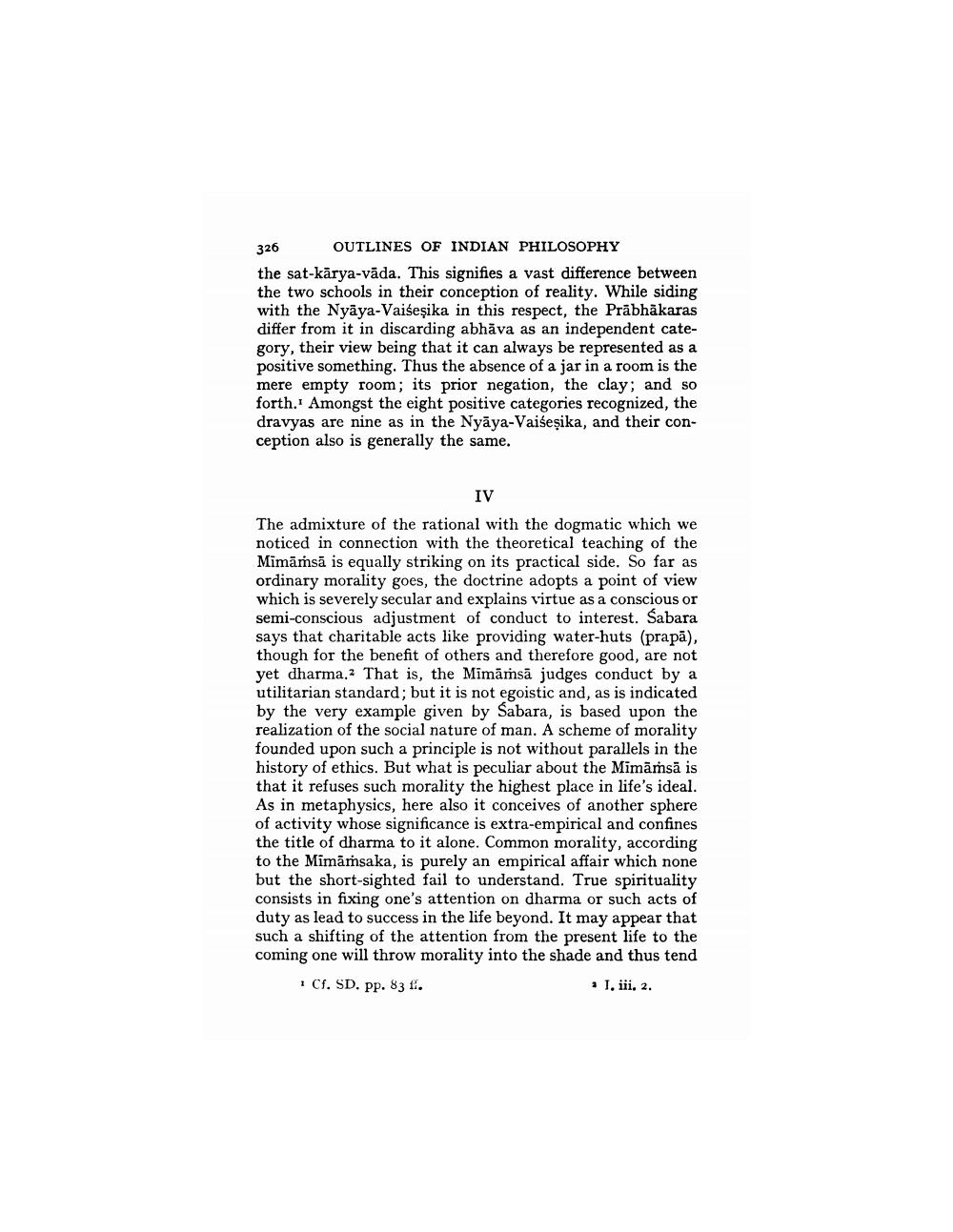________________
326
OUTLINES OF INDIAN PHILOSOPHY
the sat-karya-vāda. This signifies a vast difference between the two schools in their conception of reality. While siding with the Nyaya-Vaiseşika in this respect, the Prabhakaras differ from it in discarding abhāva as an independent category, their view being that it can always be represented as a positive something. Thus the absence of a jar in a room is the mere empty room; its prior negation, the clay; and so forth. Amongst the eight positive categories recognized, the dravyas are nine as in the Nyaya-Vaiśeṣika, and their conception also is generally the same.
IV
The admixture of the rational with the dogmatic which we noticed in connection with the theoretical teaching of the Mimāmsă is equally striking on its practical side. So far as ordinary morality goes, the doctrine adopts a point of view which is severely secular and explains virtue as a conscious or semi-conscious adjustment of conduct to interest. Śabara says that charitable acts like providing water-huts (prapā), though for the benefit of others and therefore good, are not yet dharma. That is, the Mimamsā judges conduct by a utilitarian standard; but it is not egoistic and, as is indicated by the very example given by Sabara, is based upon the realization of the social nature of man. A scheme of morality founded upon such a principle is not without parallels in the history of ethics. But what is peculiar about the Mimāmsā is that it refuses such morality the highest place in life's ideal. As in metaphysics, here also it conceives of another sphere of activity whose significance is extra-empirical and confines the title of dharma to it alone. Common morality, according to the Mimāmsaka, is purely an empirical affair which none but the short-sighted fail to understand. True spirituality consists in fixing one's attention on dharma or such acts of duty as lead to success in the life beyond. It may appear that such a shifting of the attention from the present life to the coming one will throw morality into the shade and thus tend I. iii. 2.
1 Cf. SD. pp. 83 1.




